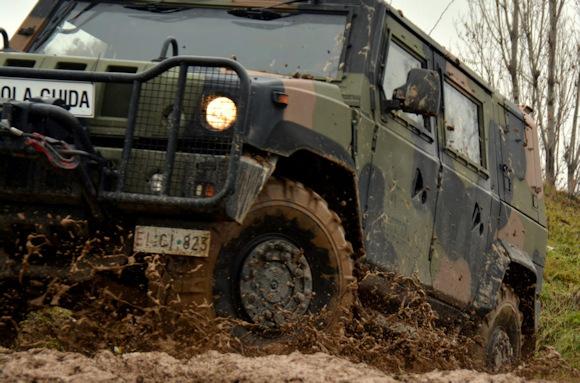We dealt with the topic of the reserve and its great potential, obtaining an interesting response and, about a year ago, the excellent training of military guide and the subsequent operative technique was underlined off-road offered by the Armed Forces, particularly in the Army, an activity as we shall see, which continues with step increasingly specialized where no technical detail is left to chance.
Contrary to what one might think, only some of the military vehicles designated for the achievement of the basic model 2, 3, 4 and 5C ratings have the double pedal, while the means used for the specialist ratings in hostile terrain such as off-road vehicles are lacking . Here as well as a skilled conductor, you must also be a forward-looking navigational logistician to understand, for example, where to rest your wheels before loading a day or night activity, always trusting in a backup strategy if the first fails. An aspect that highlights the careful selection that the Army reserves for its aspiring conductors, in many ways completely different from the memories of the draft.
Precisely because of our appreciation for the military driving school, thanks to the Army Promotional Center, we will turn the spotlight on the departments involved in training and maintaining the qualities of operational driving in contexts off-road, but in this article we will deal with a rather hot topic and bounced back to the news of newspapers, including the Mattino di Padova, la Repubblica, Corriere and la Nazione.
Here the accused is not the military world but the public administration. To end up once again under the lens of criticism would be the carelessness in taking steps without foreseeing the events: the employees of the MIT (Ministry of Infrastructure and Transport) have a non-negligible average age and year after year they will be placed in retirement without turnover.
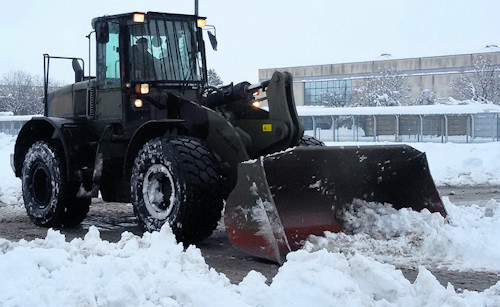 You will surely remember when you wanted to use the military to re-asphalt the streets of the capital, rather than using them to clear mud and snow. All legitimate choices for an institution in the service of the country's security, but you will also agree that the closest role in the national operations of an armed force would concern, if anything, direct assistance in synergy with the Civil Protection. On the other hand, the generals have to perform - as it should be - but the right criticisms from the auxiliary leaders were certainly not lacking, see General Bertolini, Camporini and the former commander of the "Sassari" General Manca. A bizarre idea that brought the crisis in the management of the waste emergency of 2008 to the news, returned thanks once again to our military.
You will surely remember when you wanted to use the military to re-asphalt the streets of the capital, rather than using them to clear mud and snow. All legitimate choices for an institution in the service of the country's security, but you will also agree that the closest role in the national operations of an armed force would concern, if anything, direct assistance in synergy with the Civil Protection. On the other hand, the generals have to perform - as it should be - but the right criticisms from the auxiliary leaders were certainly not lacking, see General Bertolini, Camporini and the former commander of the "Sassari" General Manca. A bizarre idea that brought the crisis in the management of the waste emergency of 2008 to the news, returned thanks once again to our military.
Military as examiners for civil license exams?
Passing the match access to the Armed Forces as a last resort to get rid of administrative incapacities is becoming a custom and, in this regard, military doctors come to mind in the hospital wards of Molise. A modus operandi perhaps questionable, but there would also be those who proposed the use of the military to make up for the shortage of civilian driving examiners at national level. It is an extreme remedy to contain a real emergency and not to dispose of the backlog.
To clarify the issue, is Dr. Ulysses Cecchin, lieutenant of the 24th rgt. logistics The Dolomites of the Alpine troops, now included in the selected reserve; owner of a driving school, but above all secretary of the presidency office of ANTARES, the National Association of Owners of Driving Schools and Studies.
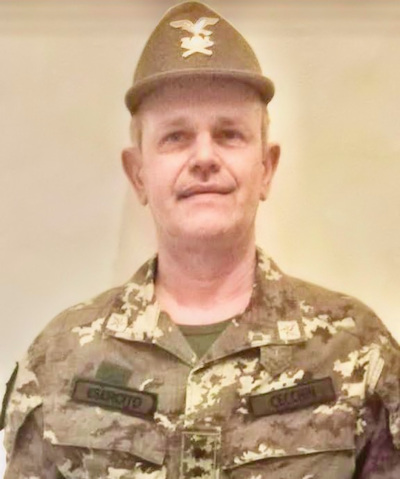
The current climate is alarming, stresses Cecchin, the examiners and those who are there are missing, they are rebounded between the administrative duties of the counter, the revisions and tests - with expectations of even a year - and finally used for practical driving exams. It is good to remember that some revisions of heavy vehicles can only be carried out on the aprons of the Civil Motorization Offices or UMC and have not yet been delegated to private individuals, despite the fact that the legislator has already spoken to the Stability Law for over a year.
In light of this reality that is bringing the country to its knees, with Padua, Bergamo and Turin in the lead, there would be an insufficient remuneration that would send the competitions for engineer deserted especially in the DGTs of the North-East and North-West. UNUCI, Lieutenant Reservist Ulisse Cecchin, therefore launched a proposal to the legislator to amend article no. 332 of the Regulations implementing the Highway Code, which would therefore allow for the examination of driving licenses, not only the employees of the MIT (Ministry of Infrastructure and Transport), but also the officials of other ministries on a voluntary basis.
A real opportunity
Antares gives me examples that cannot be shared, at least when the main theme should be the containment of public spending. In fact, the proposal to employ during the emergencies to dispose of the examiner's public deeds, figures such as a professor, a carabiniere, a policeman, a financier, a vessel lieutenant, a prison guard, an officer or a non-commissioned officer could be considered of the army in permanent service or of the selected reserve, when they are not on duty, but also a trainer of an FFAA auxiliary Corps after having attended a course online. An iter that includes a final exam at the DGT (General Territorial Directorate) and support with colleagues from the nearest motorization.
The whole, stresses Cecchin, on a voluntary basis by reporting its availability to the director of the UMC where it intends to provide service using the well-known motorist portal that should be enhanced and enhanced. The examiners would be remunerated by the driving schools pursuant to law no. 870/1986, amended by the Interministerial Decree of 05/10/2015 which provides for the mission allowance based on the grade, seniority, distance of the driving school from the engine, as already happens for the driving exam sessions in private account.
It should be noted that everything would be achieved without additional costs for the State, but perhaps many of you are wondering why the solutions to the problems of the Public Administration must once again come from citizens rather than from a paid policy to do so. An idea, which in my opinion, could be extended by drawing lots, even to driving instructors, not in the province in which they practice.
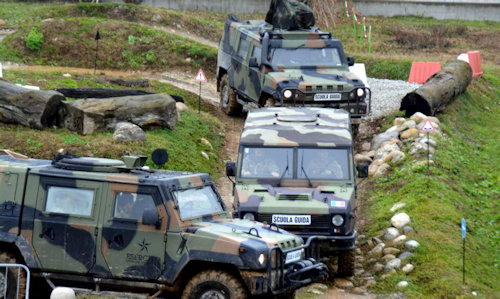
To curb the proposal, there would once again be the short-sightedness of an absurd bureaucracy and fears in exposing itself? Or perhaps a legislator who has not been able to impose himself against the Directorate General?
In this context, we will not fail to update you on our military's propensity for this proposal.
Military accuracy in driving teaching
The Italian Army in recent months, has highlighted on social media a training campaign for driving tactical vehicles in hostile areas, the main actors, in addition to the conductors and instructors of the armed force, were basically the well-known VTLM Lynx and VM90T.
Those who expected a first debut in a department test of the Military Utility Vehicle 70.20, the MUV, of which, however, there was no trace, if anything, much criticism, will have been disappointed.
On an off-road course, not at all obvious, the 2nd alpine rgt of the Taurinense, was able to carry out various tests and tests of increasing difficulty programmed by the instructors, using the rehearsal area of the Merlo company of Cervasca (CN). An opportunity offered by the entrepreneur Amilcare Merlo, owner of the company of the same name, born in the province of Cuneo in 1966 and now a solid multinational specialized in the construction of rotary telescopic handlers equipped with four-wheel drive, as well as construction machinery. The distinctive color of the machines produced by Merlo SpA is green, but not in the Nato shade, but an unmistakable fluorescent green that highlights the reliability and versatility of this historic Italian company.
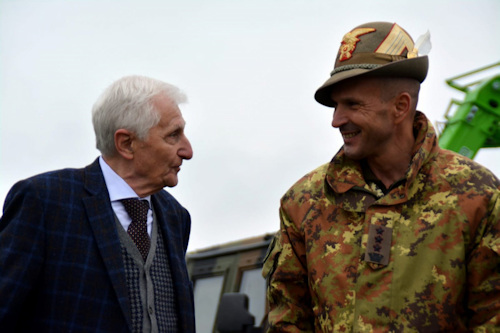
Under the leadership of the commander of the 2nd regiment, Colonel Marcello Orsi, our soldiers pushed the VTLM multirole to the limit Lynx and VM90 T, safely overcoming transversal, longitudinal, twist, ford slopes by experimenting with different grip conditions, using all-wheel drive, the reduction gear and the differential locks, up to the use of inertia to overcome the obstacle, taking advantage of those notions in military manuals that make the difference when you have to cross hostile terrain with your team.
The watchword seems to have been "interoperability", that is, a sort of symbiosis, dual use, of synergy between military means and materials with Merlo's multirole civil machinery, supplier of the FFAA.
It is not difficult to think that the activity wanted to be, in addition to a useful training, a media propaganda of dialogue today increasingly real between the military world and the civil professions for the purposes also and above all of civil protection. In fact, you will remember at the time of the draft, at least until the mid-90s, that military training activities were carried out in basins separated from the civilian world, but today that impenetrable dividing line between the two worlds which prevented, among other things, a reciprocal exchange is fading - even if there are not a few skeptics among the military themselves - almost certainly for a choice of economic containment.
The civil school should be able to take inspiration from the military
There is no doubt, the military school is far ahead not only for the total hours necessary to obtain a driving license, but also for the issues that are addressed by the program.
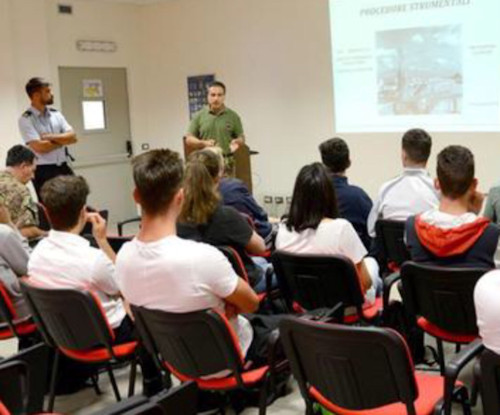
The military program is more widespread and, among other aspects, provides, as was also customary for civilian titles, knowledge of elements of mechanics and applied electronics of the vehicle, in addition to imparting right maneuvers in various load conditions, road conditions and grip. As public officials, in a state of necessity, it is important to also know the basics of traffic regulation, if you have to move a bulky vehicle or you are passing through an accident site. Responsibility, security and interaction are therefore the cornerstones for any military qualification model.
Today the driving schools are left alone in their delicate task of training and empowering future motorists, who are increasingly averse to all this does not happen automatically and with little study and sacrifice.
I could draw up a long list of the perplexities of eighteen-year-olds struggling with the first guides; it would seem that only a fraction of them know the correct way to use the clutch pedal, and a slightly higher percentage hardly understand that the engine does not start by itself after shutting down. It is surprising but it is the truth.
A compromise in the final quality of the candidates would certainly not hurt and perhaps also avoid serious problems; it was only if we observed the objects lost on the highway - personally with the bus a washing machine flew from a bin or luggage rack because it was not correctly fixed with ratchet straps - but also bicycles or individuals walking in the lane.
How many motorists then, after a slight rear-end collision without injuries, also stay in the driving lane on the highway, without occupying the rest areas or the docks, in defiance of article 189 paragraph 3 of the CdS?
Photo: Italian Army / web / author

